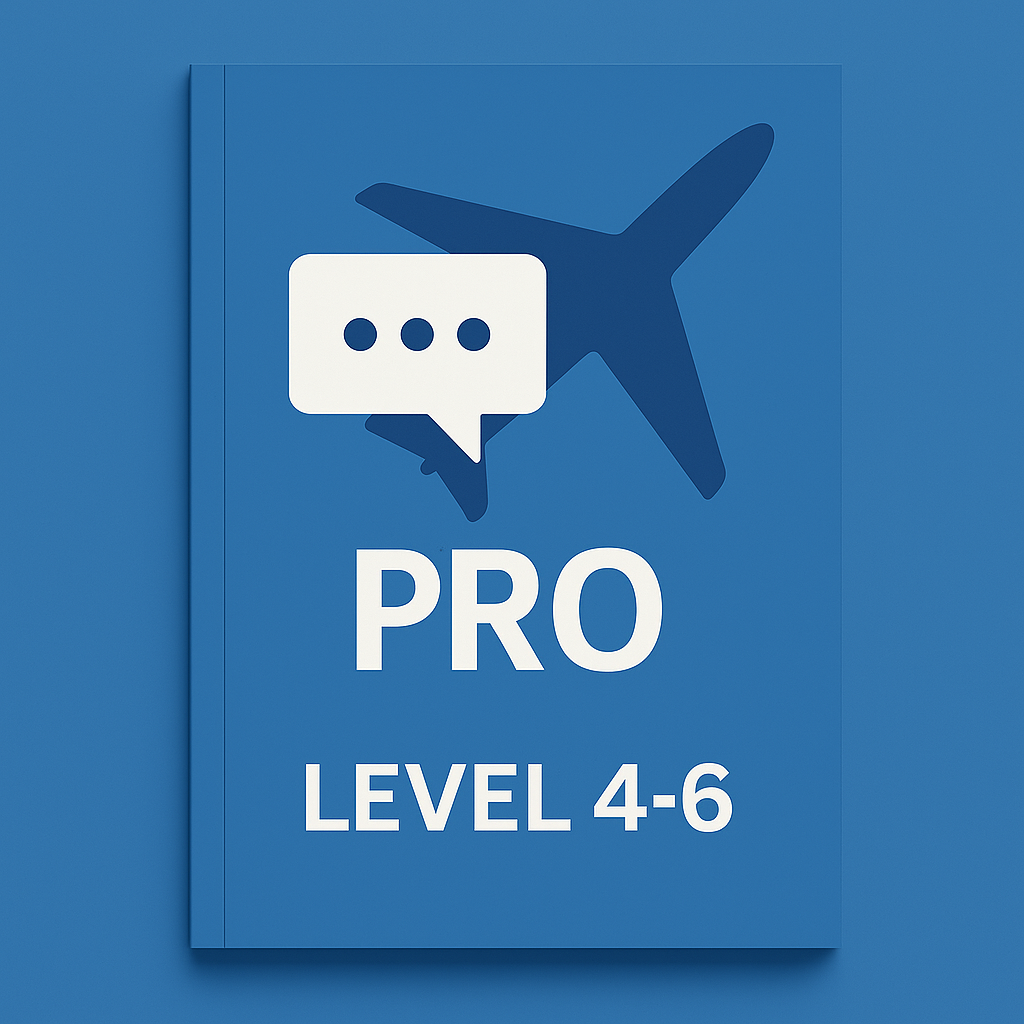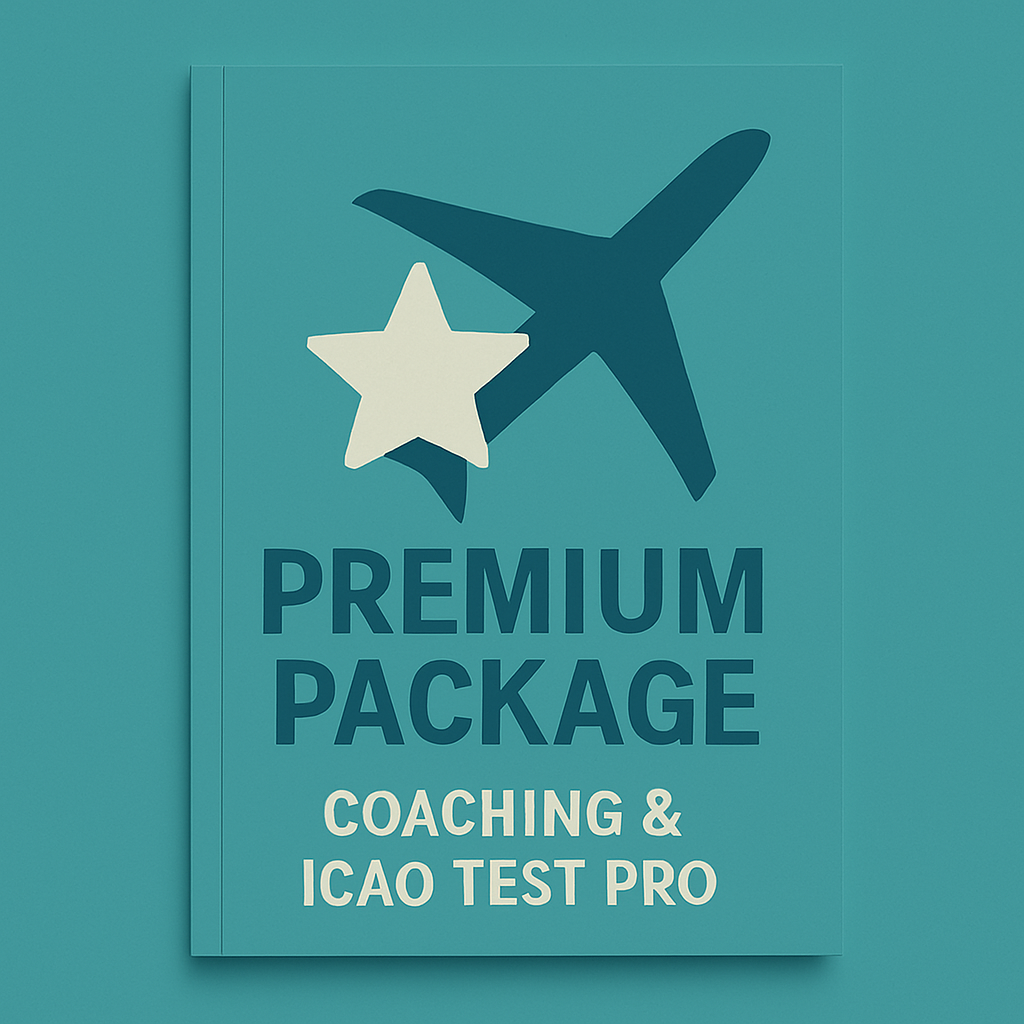10 Proven Tips to Prepare for Your ICAO Language Proficiency Test

Preparing for an ICAO Language Proficiency Test can feel overwhelming – especially if English isn’t your first language. But with the right strategy, you can improve your aviation English, build confidence, and achieve a higher ICAO level. Here are 10 practical preparation tips to help you succeed.
1. Immerse Yourself in English Daily
The best way to improve fluency is through daily exposure. Watch English-language aviation videos, listen to podcasts, read articles, and try to think and speak in English as much as possible. Immersion helps your brain adapt and speeds up learning naturally.
2. Listen to Real ATC and ATIS Transmissions
Familiarize yourself with real-world aviation communication by listening to ATIS and ATC transmissions. Platforms like YouTube and liveatc.net are excellent resources. This helps you recognize standard phraseology and understand accents and radio clarity.
3. Study Aviation Vocabulary and Describe Visuals
Expand your aviation vocabulary by looking up relevant terms and practicing picture descriptions. This skill is often tested in the exam. Use our interactive preparation video to simulate describing technical scenes, aircraft types, and situations in clear, structured English.
4. Review ICAO Standard Phraseology
Master the ICAO-approved aviation phraseology – including how to pronounce numbers and use standard terms. For instance, “niner” instead of nine, or spelling out large numbers digit by digit. Correct use of terms boosts both accuracy and professionalism in the test.
5. Refresh Grammar Basics
Good grammar is essential in the ICAO English exam. Make sure you understand how to use present, past, and future tenses correctly, as well as prepositions and adjectives. Our free preparation booklet offers a helpful overview of key grammar points.
6. Learn from Common Translation Mistakes
Avoid typical errors that happen when directly translating from your native language. Look up common mistakes specific to your language background and practice clear, idiomatic English instead.
7. Practice Answering Common Exam Questions
Be prepared to answer typical ICAO exam questions, such as:
-
“How do you reassure passengers who are afraid of flying?”
-
“What do you usually check during your preflight inspection?”
Practice your answers out loud and focus on using complete sentences with proper structure.
8. Practice the Conversation Part with a Colleague
The exam ends with a free conversation on a topic of your choice. It's not about the content but your ability to speak fluently and use a range of sentence structures. Talk about your flying experience, a challenging flight, or even a favorite vacation. Simulate this part with a colleague – it’s excellent fluency training and helps reduce stress.
Remember: Our examiners are also professional pilots. This part often feels more like a relaxed conversation between colleagues than a formal test.
9. Avoid Filler Words
Try to avoid using fillers like “um,” “ah,” or “so”. Instead, use natural transition phrases such as:
-
“Let me think about that…”
-
“From my point of view…”
-
“I believe that…”
This keeps your speech fluent and controlled, even when you're thinking.
10. Record Yourself and Review
Recording your answers to typical test questions is a powerful self-assessment tool. Play them back to spot issues with pronunciation, pacing, or grammar. You’ll notice patterns and can track your progress over time. It’s one of the most effective ways to prepare independently.
Final Thoughts
Even experienced pilots make language mistakes – and that’s perfectly normal. Success in the ICAO Language Proficiency Test isn’t about flawless English, but about clear, confident, and effective communication. Focus on building fluency, sharpening your listening skills, and getting comfortable with aviation-specific language.
With these 10 preparation tips, you won’t just be ready to pass the test – you'll be better equipped to communicate safely and professionally in your daily flight operations.
And remember: you're not just preparing for an exam. You're developing communication skills that truly matter in the real world of aviation. As pilots ourselves, we’ve designed the entire exam process to reflect the reality of the cockpit – practical, focused, and relevant. Our goal isn’t just to help you achieve a higher ICAO level, but to help you become a more confident communicator – with ATC, and among your fellow crew members.



